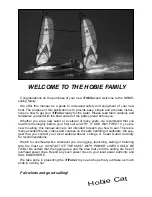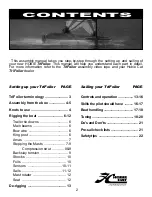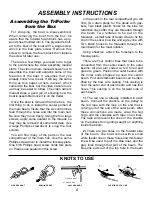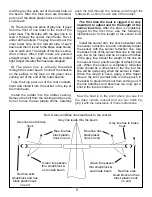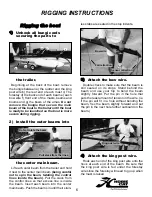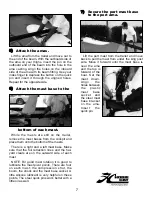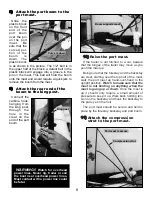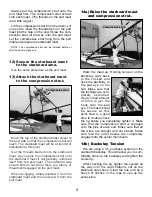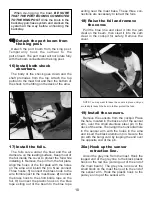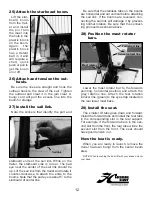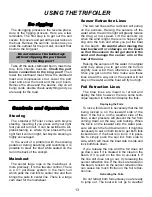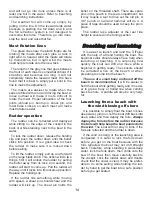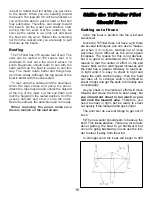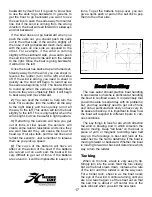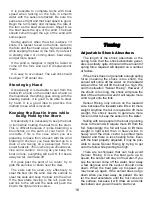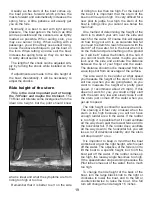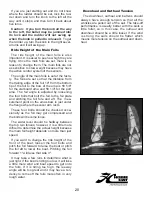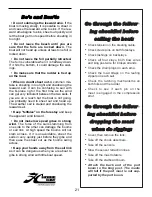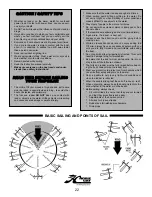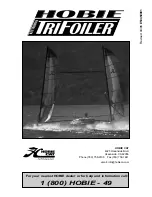
20b) Sensor Bow Line
The sensor bow line is the grey line which is
attached to the bow of the sensor. The brass
hook on the end of the line hooks to the pad
eye on the mast. The pad eye is on the front of
the mast and is located about 5” inches from
the bottom of the mast.
This line is very important to the safe
operation of the boat
(see page 5).
Please
be sure it is operating correctly and the line
length is correct. The line length should be
adjusted so that the sensor always has a posi-
tive angle of attack (front end up). The line will
have some slack when the sensor is complete-
ly retracted, but the line will be quite snug
when the sensor is all the way down.
21) Raise the sails.
Attach the halyard to the head of the sail.
Make sure the boat is turned into the wind.
The first two-thirds of the sail should go up
very easily, but because this is a fully battened
sail with considerable luff curve it may catch in
the luff opening as the sail is raised.
Hint: push
up on the sail and keep the sail bunched up in
the lower part of the track while it is going up.
This will negate the effects of the luff curve and
the sail will go right up. While pushing up, it is
not necessary to feed the sail into the track. If
you do not push the sail up, the sail will not
feed in and it will jam.
22) Lock the halyard.
Once the sail is all the way up, you will lock
the halyard by getting the locking ball under
the fork at the top
of the mast. First
make sure that
the ball is below
the fork by pulling
the sail all the way
to the top. Then
place the cable
between the forks
and pull the sail
down by the foot
while easing the halyard out. The ball will get
forced into the fork.
23) Remove the halyard and
stow it.
Thread the
bungi cord on the
mast through the
thimble on the
end of the halyard
cable and secure
it to the plastic
hook. Unhook the
rope halyard from
the cable and
stow the rope in
the back of the
main hull.
24) Secure the downhaul.
Feed the lower part of the sail into the mast.
Insert the tail end of the downhaul through the
tack of the sail and then hook it to the peg on
the base of the mast. Pull the downhaul tight
until all the wrinkles are gone from the luff of
the sail and cleat it. Coil the excess line and
secure under the downhaul lines.
NOTE: The boat will be easier to handle on the beach dur-
ing windy days if the downhaul is loosened while beached.
Fork
Downhaul
11
Peg
Summary of Contents for TriFoiler
Page 1: ...ASSEMBLY MANUAL...


